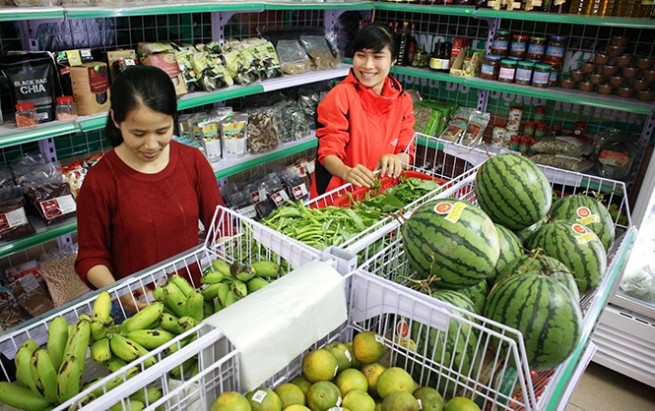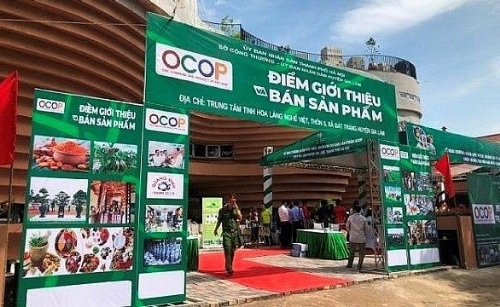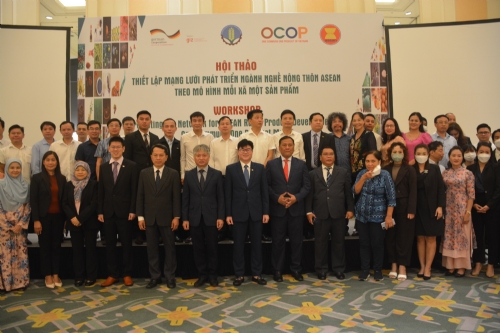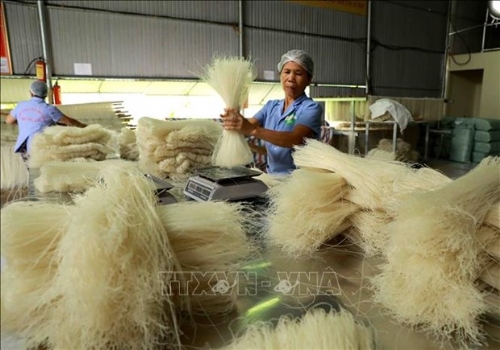Enhancing Cooperative Economic Performance
Monday, August 3, 2020 10:53

Developing new-style cooperatives, especially agricultural cooperatives, plays an extremely important role in agricultural restructuring and new countryside development in Vietnam, not only helping improve incomes for people, but also substantially changing the rural appearance in the international integration period.
Speeding up the role of cooperatives
New rural development practices have shown that the agricultural cooperative economic model has made very important contributions, improving incomes of farmers and becoming a basic element and motivation to formulate the foundation for new rural development. In recent years, as agricultural production has been restructured, the cooperative economy has achieved new progress in quantity and efficiency, with various kinds of services to promote rural business and production development.
According to the Vietnam Cooperative Alliance (VCA), Vietnam currently has about 19,800 cooperatives, 54 cooperative associations and 370,000 cooperative teams that employ 12.5 million cooperative members and workers. Cooperatives have importantly reduced poverty and significantly contributed to the country's gross domestic product (GDP). In particular, the country has 9,964 cooperatives engaged in agriculture, forestry, salt production and fisheries; 1,473 engaged in trade and service; 1,078 engaged in transportation; 778 engaged in construction; 3,074 engaged in handicraft; 1,142 people's credit funds; 1,589 engaged in utilities services; and 749 involved in other fields. Some provinces have many newly established cooperatives such as Ha Tinh (36 new cooperatives), Vinh Phuc (28) and Bac Giang (21).
Agricultural cooperatives have changed the mindset and practices of farmers; applied scientific and technical advances; and improved production performance; and especially ensured stable consumption of agricultural products. In some fields, cooperatives have expanded production, invested in equipment to boost production and business capacity, and significantly contributed to the State budget. They have actively taken part in local social activities, eliminated hunger and reduced poverty, and ensured legitimate rights and interests of cooperative members and employees.
According to the Ministry of Agriculture and Rural Development, in the coming time, the collective economy and new cooperatives will be a priority for development, benefiting rural residents. This is a way for them to escape poverty. The ministry has aligned the implementation of Resolution 13-NQ/CP with the task of carrying out the agricultural restructuring and new countryside development. It has also clearly defined the task of production reorganization with focus placed on developing new types of agricultural cooperatives - one of three pillars of agricultural restructuring and new countryside development. At the same time, it has advised the Government to incorporate cooperative development criteria into the National New Rural Development Criteria Set (Criterion 13).
By 2025, Vietnam will have 8,000 more cooperatives, for a total of about 20,000; 3,000 of them will be high-tech agricultural cooperatives. The country will strengthen value chain-based cooperation to have at least 50% of agricultural cooperatives linked to the value chain.
Thua Thien Hue: Hi-tech organic agricultural cooperative development model
The province of Thua Thien-Hue currently has 302 cooperatives, including 238 agricultural cooperatives, which largely focus on providing support services for members and developing household economy, irrigation, breeding and stocking, crop and livestock protection, forestry and incubation. Many cooperatives have guided members to adopt organic agricultural production and VietGap, register labels and brands and bring their products to supermarkets inside and outside the province.
The province has many well-performing cooperatives. Typically, Quang Tho 2 Agricultural Cooperative (Quang Tho commune, Quang Dien district) has successfully built the collective brand of Quang Tho pennywort tea. Phu Ho Agricultural Cooperative (Phu Vang district) has developed the “Phu Ho Rice” brand name. Thuy Bieu Agricultural Cooperative (Hue City) has successfully developed a special green tea. Bao La Cooperative (Quang Dien district) develops rattan and bamboo products. Mr. Nguyen Luong Tri, Director of Quang Tho 2 Agricultural Cooperative, said that the cooperative has created jobs for more than 300 households. It produces pennywort tea branded Quang Tho Pennywort Tea with two key products: tea bags and vacuum-packed dried tea. Its products are now available in many provinces and cities across the country. Its pennywort tea processing factory currently employs more than 10 workers, paid over VND3 million a month on average.
Mr. Ho Vang, Deputy Director of Thua Thien-Hue Department of Agriculture and Rural Development, in 2016, the Thua Thien-Hue Provincial People’s Committee issued a decision on agricultural restructuring towards sustainable development, emphasizing the application of advanced science and technology to agricultural production, high-tech agriculture and organic agriculture. The provincial government has invested VND12 billion to support individuals and organizations to apply hi-tech agricultural production. Thua Thien-Hue strives to have 350 cooperatives with about 175,078 members by 2025. The average revenue of cooperatives will increase by 7-10% annually, with the average income rising by 1.5 times. The average income of regular cooperative workers grows by over 10% a year. Each district, town and city will have three new-style cooperatives linked to value chains and one high-tech cooperative, he said.
By Minh Ngoc, Vietnam Business Forum

 THE PROGRAM COOPERATED WITH CENTRAL COORDINATION FOR NEW-STYLE RURAL DEVELOPMENT
THE PROGRAM COOPERATED WITH CENTRAL COORDINATION FOR NEW-STYLE RURAL DEVELOPMENT
Other news
- HANOI: Promoting the consumption of craft village products and developing community tourism(11/5/2022 3:16:04 PM)
- Chuong My: Effectiveness from the One Commune One Product Program(11/3/2022 10:04:10 AM)
- Thanh Hoa develops OCOP products(11/1/2022 1:30:31 PM)
- Promoting the network for Asia Rural Product Development on one commune one product(8/30/2022 9:43:23 AM)
- Phu Tho eyes 56 new 3-star OCOP products for 2022(8/23/2022 3:09:56 PM)
- Opening of the OCOP product introduction week in Hanoi in 2022 in Phuc Tho district(8/1/2022 3:28:38 PM)
- Evaluation and classification of OCOP products Hoan Kiem District in 2022(7/27/2022 10:10:23 AM)
- Hanoi turns to green, sustainable agricultural sector(6/28/2022 4:10:22 PM)
- OCOP Forum in the Mekong Delta - Dong Thap 2022: Opening up great opportunities for regional products.(5/4/2022 2:38:13 PM)
- Over 1,000 spice products on display in Ho Chi Minh City(4/29/2022 2:34:02 PM)
The featured news
-
HANOI: Promoting the consumption of craft village products and developing community tourism
-
Promoting the network for Asia Rural Product Development on one commune one product
-
Phu Tho eyes 56 new 3-star OCOP products for 2022
-
Opening of the OCOP product introduction week in Hanoi in 2022 in Phuc Tho district
-
Evaluation and classification of OCOP products Hoan Kiem District in 2022






